Yates Account
Join now
Create a Yates account today!
Sign up to join the Yates Garden Club for monthly e-mails packed with seasonal inspiration, tips for success & exclusive promotions.
Plus if you’re a Garden Club member you can take part in the Yates Growing Community - a blog to share successes, get advice & win prizes in fun challenges along the way!

Forgot password
Enter the email address associated with your account, and we'll email you a new password.

Autumn is your opportunity to add dazzling colour to your late winter and spring garden, and fill your place with fragrance. There's nothing quite like glorious blooms popping up to announce spring, and right now's the perfect time to get bulbs started - here's how!
They're surprisingly easy to grow - after a bit of preparation and planting out, they won't need much care before they burst into flower.
What You Need to Know About Spring-Flowering Bulbs
There's a spectacular range of spring-flowering bulbs to choose from, with countless varieties of flower types and colours. We're spoilt for choice!
Some of the most popular spring flowering bulbs include ranunculus, tulips, daffodils, narcissus (AKA jonquils), Dutch iris, crocus, freesias, snowflakes, hyacinths, anemones, ixias, grape hyacinths, bluebells and sparaxis.
Some spring bulbs are only happy to flower after they've had a period of dormancy, during a properly cold winter. This process is called 'vernalization'. Fortunately, we can fool cold-loving bulbs into flowering by putting them in the fridge for 4-6 weeks, to simulate the conditions they need to trigger growth.
'Naturalising' is the term used when bulbs are planted under trees or in a lawn, then left from one season to the next. Bluebells, freesias, daffodils, jonquils, sparaxis and ixias are favourites for naturalising. Flowers can be trimmed off as soon as they've finished, but leaves must be allowed to die down naturally. When grown in a lawn, this means waiting until the leaves have turned brown before mowing. In climates where the lawn grows vigorously in spring, it's a bit more challenging to have bulbs naturalised in the lawn, so planting them in a separate garden bed or in a mulched area under trees is more manageable.

Freesias
For cooler climates, fritillarias, hyacinths, jonquils, tulips, crocus, daffodils and the true snowdrops (Galanthus spp.) are ideal choices. Alliums, relatives of the edible onion, are also cold-lovers. All these species are most suited to climates with frosty winters and may not flower as profusely in warmer areas.
If you're in an area with very mild winters, you'll need to take a bit more care when choosing your spring-flowering bulbs. Bulbs like freesias, spring stars (Ipheion spp.), babiana, sparaxis, triteleia (Brodiaea laxa), chincherinchee (Ornithogalum thyrsoides) and star-of-Bethlehem (Ornithogalum umbellatum) do well in warmer climates.
It's best to wait until mid or late autumn to plant spring-flowering bulbs in frost-free areas. Planting bulbs a little deeper than recommended can also help their performance in warmer soil. Keep the soil well mulched (which helps keep it cooler) and ensure the bulbs are well-watered throughout the growing and flowering seasons.

Hyacinths
Step-by-Step Planting Guide
Step 1 – Give your new bulbs a cool start
- Bulbs prefer cool soil, so if the weather isn’t cool enough (consistently lower than 10°C) we recommend storing your bulbs in your fridge in an egg carton or paper bag. Don’t store your bulbs in a plastic bag, as it will make them sweat and they can start to rot.
- If you’re growing cold-lovers like tulips, daffodils or hyacinth they will definitely need to be refrigerated for a month or so at about 4°C (but no longer than 6 weeks, and don't be tempted to put them in the freezer). This tricks them into thinking they've slept through a cold winter and triggers them to start growing. These cold-loving bulbs are seldom successful for a second year in warm climates, so it's best to treat them as an annual if you don't get frosts.
- Try to keep bulbs separated from fresh fruit and vegetables in your fridge, as bulbs can be very sensitive to the ethylene gas naturally released by fruit and some vegies.
Step 2 – Choosing the perfect spot
- Bulbs are generally happy in areas that give them full or part sun. We recommend reading the packet instructions, just to be 100% sure.
- You can also try planting hyacinths in a shallow bowl, for an impactful massed display. These can look quite spectacular.

Ixia
Step 3 – Preparing soil for planting
- Once you have your perfect spot, you'll need to prepare your soil to ensure your plants get the best start. Clear all weeds, rocks and debris, and then dig the soil over until it’s fine and crumbly. You can use Yates Black Magic Seed Raising Mix to enhance the soil (or just plant straight into it), because it has the ideal consistency for growing new bulbs.
- Soil improvement is as simple as mixing two handfuls of Yates Dynamic Lifter Organic Plant Food into each square metre of soil. It's rich in organic matter that provides a boost of nutrients, nurtures the soil, and attracts earthworms and beneficial soil microorganisms.
- Ensure the soil is free-draining, because bulbs can rot in soggy soil.
Step 4 – Planting
- Most bulbs are planted with the pointy end up (except for anemones and ranunculus). The general rule of thumb is to plant bulbs at a depth approximately twice their height. Check the bulb packet label for planting depth information.

Babiana
Step 5 – Spring Bulb Care
- As soon as you notice the bulb leaves poking up through the soil, apply a light scattering of Yates Blitzem Slug & Snail Pellets around the garden bed to control snails and slugs.
- Keep the soil moist (but not saturated) and feed every 1-2 weeks with a high potassium fertiliser like Yates Thrive Roses & Flowers Liquid Plant Food. Keep up the feeding through flowering season, until the leaves start to yellow and die back in summer. Don't cut back the yellowing leaves, be patient until they die back completely.
- Feeding is important for the current health of the bulb AND next year's flowers. The more nutrients the bulb can absorb this season, the better next year's flowering season will be.

Tulips
Growing Tips for Bulbs
Do I Really Need to Put Bulbs in the Fridge?
If your bulbs haven't been pre-chilled (some suppliers will have done this for you already), yes - put them in the fridge crisper for 4-6 weeks. This vernalizes bulbs and triggers them to start growing, even if your local weather isn't cold enough.
Can I Cut The Yellow Leaves Back, Or Tie Them Up?
Leaves need to absorb as much sunshine as possible, which feeds nutrients back to the bulb. It's important not to cut off the yellow leaves or tie or plait them up (which reduces their access to sunlight).
Can I Leave Bulbs In Pots After Flowering?
Yes, but it's important to continue watering and feeding until the leaves have died back. Then, keep the pot in a cool protected spot during summer. Don't allow the pot to become waterlogged, because the bulbs can rot while they're dormant. It might be easier to dig the bulbs up and store them in a cool, dry spot for replanting next autumn.
What're the Easiest Spring-Flowering Bulb to Grow?
Daffodils and jonquils are amongst the easiest bulbs to grow, and are great for beginner gardeners.

Sparaxis
Can I Leave Bulbs In the Ground All Year?
In areas with well-drained soil, bulbs like bluebells, freesias, daffodils, jonquils, sparaxis, star-of-Bethlehem (Ornithogalum umbellatum) and ixias can be left in the ground to naturalise. Bulbs like tulips and hyacinths are best dug up (lifted) each year, stored and chilled before being replanted.
How Do I 'Layer' Bulbs in A Pot?
Potted bulbs can be grown more closely together than in garden soil. Even better, different types of bulbs can be grown together in the same pot. To layer bulbs, plant the largest bulbs deepest in the pot, add more potting mix, then plant smaller bulbs above. This will create a wonderfully dense bulb display.
Can I Grow Hyacinths in a Vase?
Yes! Hyacinth bulbs can be suspended over a vase or jar of water. Roots grow into the water and leaves and flowers then develop. Treat Hyacinths grown in this way as an annual display, as they're unlikely to do well if replanted the following year.
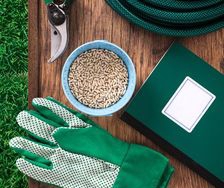
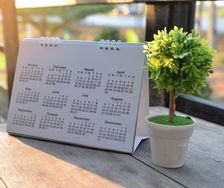
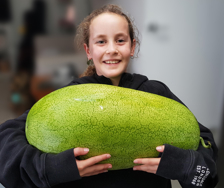
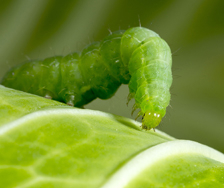
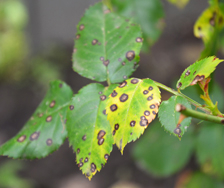
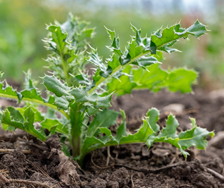
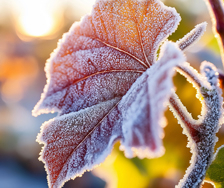
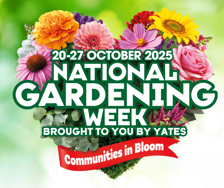









Share
Share this article on social media